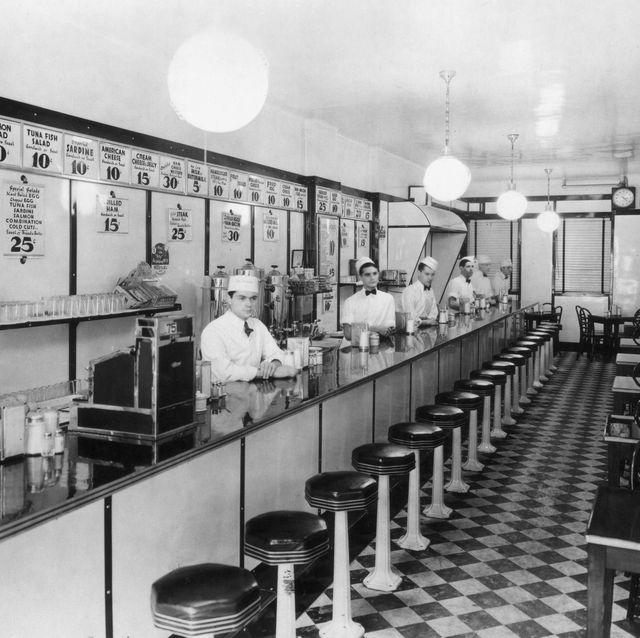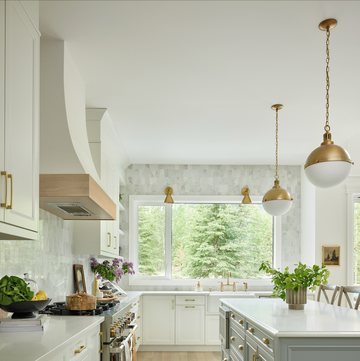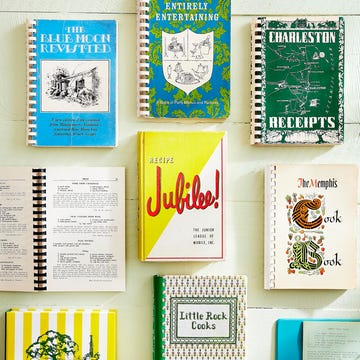11930: Man Behind The Counter
 Mark Goebel Photo Gallery//Getty Images
Mark Goebel Photo Gallery//Getty ImagesDuring the '30s and '40s, diners became more popular thanks to their low prices. They provided customers with an affordable place to eat out during the Great Depression and World War II.
21930: Customers Waiting For Service
 George Rinhart//Getty Images
George Rinhart//Getty ImagesSoda fountains were a popular addition to diners as soda was a really popular drink back in the day. The so-called "golden age of soda fountains" went on until the 1950s.
Advertisement - Continue Reading Below
31935: Quaker Diner
 Archive Photos//Getty Images
Archive Photos//Getty ImagesThis diner from 1935 specialized in serving Quaker Oats dishes. Quaker introduced their famous Quick Oats all the back in 1922.
41937: One Patron
 Jim Heimann Collection//Getty Images
Jim Heimann Collection//Getty ImagesUp until the Great Depression, most diners were located in the Northeast, and despite the low prices, even these businesses suffered. It wasn't until after World War II that diners began to spread throughout the country to the Midwest and beyond.
Advertisement - Continue Reading Below
51939: Art Deco
 H. Armstrong Roberts/ClassicStock//Getty Images
H. Armstrong Roberts/ClassicStock//Getty ImagesIt was during the '20s and '30 that diners began adapting to changing styles and took on the Art Deco look. The traditional diner look with the open kitchen began to take shape as the years went on.
61939: Mickey's Diner
 Bettmann//Getty Images
Bettmann//Getty ImagesIn 1939, Roland Stickney came up with a diner design inspired by Art Deco and trains. He came up with a diner that was shaped like a streamlined train with a long counter, casual atmosphere, and fast American food. That's the look that Mickey's Diner (pictured here) in downtown St. Paul had.
Advertisement - Continue Reading Below
71940: Friendly Staff
 Underwood Archives//Getty Images
Underwood Archives//Getty ImagesWhen diners first began back in the early 1900s, they were more like dining cars where people ate food quickly, instead of restaurants. But as their style evolved, they became sit-down spots with waitresses and friendly owners.
81940: New York's Diner Scene
 Weegee(Arthur Fellig)/International Center of Photography//Getty Images
Weegee(Arthur Fellig)/International Center of Photography//Getty ImagesDiners once had an especially large impact on New York dining culture, as you can tell from this busy spot in New York City back in the '40s. According to the New York Times, diners surged in New York after World War II due to the influx of immigrants.
Advertisement - Continue Reading Below
91940: The Pig
 FPG//Getty Images
FPG//Getty ImagesThe Pig was a lunchroom and diner just outside of Los Angeles in 1940.
101943: Dining Cars
 FPG//Getty Images
FPG//Getty ImagesThe Palace Diner in Harrisburg, Pennsylvania was built using only pre-war materials in 1943.
Advertisement - Continue Reading Below
111944: For Working Men
 Jim Heimann Collection//Getty Images
Jim Heimann Collection//Getty ImagesBefore the 1940s, many diners catered to working men who didn't have a lot of time to eat, but wanted something good. As the 1940s went on and the workforce changed, diner owners realized they needed to adjust and wanted to begin catering to women, children, and families. They moved to areas between cities and suburbs to cater to the lower and middle class families there.
121945: New Look
 Hulton Archive//Getty Images
Hulton Archive//Getty ImagesAs the '40s went on, the look of the diner continued to change. Booths replaced tables, Formica countertops and stainless steel stools became staples, and neon signs were hung outside.
Advertisement - Continue Reading Below
131945: Counter Culture
 James W. Welgos//Getty Images
James W. Welgos//Getty ImagesFemale employees became an essential part of the diner experience before World War II ended, and were often seen working at the counter.
141950: Kids After School
 Francis Miller//Getty Images
Francis Miller//Getty ImagesKids have always loved diners, since they can eat at the counter and get ice cream sodas. Because they were inexpensive, diners were a popular spot for them.
Advertisement - Continue Reading Below
151950: Chrome Chairs
 H. Armstrong Roberts/ClassicStock//Getty Images
H. Armstrong Roberts/ClassicStock//Getty ImagesDiners continued evolving after World War II. Corners were "softened" and steel tubing and Naugahyde replaced expensive materials. Homemade diners began popping up, some even imitating the prefab diners that came before them.
161952: Lunch Box Diner
 Ernst Haas//Getty Images
Ernst Haas//Getty ImagesAccording to the New York Times, one of the great things about New York diners was "that the employees’ backgrounds are as varied as the languages spoken by the tourists who have found their way here. Costa Rica, Ecuador, Greece, Mexico, Poland, Romania — these are just a few of the countries where staff members come from. Together they constitute a microcosm of the immigrant groups that continue to arrive in New York — who not only made the city what it was, but the best of what it is and could be."
Advertisement - Continue Reading Below
171954: Sundaes For All
 Carl Iwasaki//Getty Images
Carl Iwasaki//Getty ImagesIn this photo, a waitress brings "Uranium Sundae" to a table. The sundae was named after Salt Lake City, Utah's booming uranium industry.
181955: Double Date
 Archive Photos//Getty Images
Archive Photos//Getty ImagesBy the mid-1950s, diners were officially a "thing." There were at least 6,000 diners along the country's roads to be found.
Advertisement - Continue Reading Below
191961: Times Square
 Universal History Archive//Getty Images
Universal History Archive//Getty ImagesThis photo of a lively diner in Times Square is pretty representative of what diners were like in New York in the '60s. Even in the heart of the city, people flocked to them to socialize.
201971: George's Luncheonette
 Scott McPartland//Getty Images
Scott McPartland//Getty ImagesThis eatery in downtown Manhattan is still pretty crowded despite the fact that diners weren't the attraction they used to be by the time the '70s came around.

Jessica is a freelance writer from New York who loves kale salads and hanging out with her cats.
Advertisement - Continue Reading Below
Advertisement - Continue Reading Below
Advertisement - Continue Reading Below


































